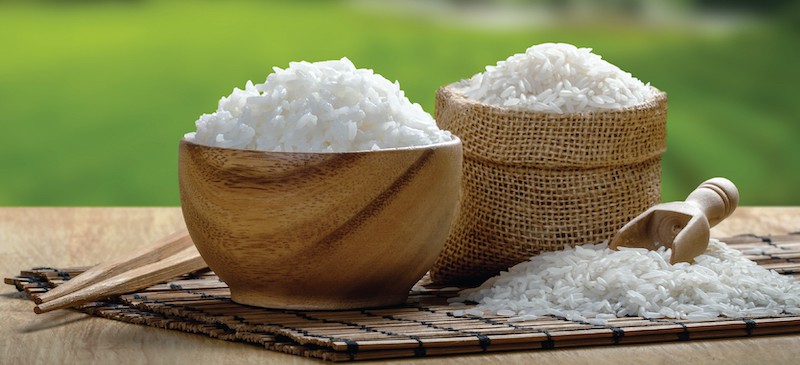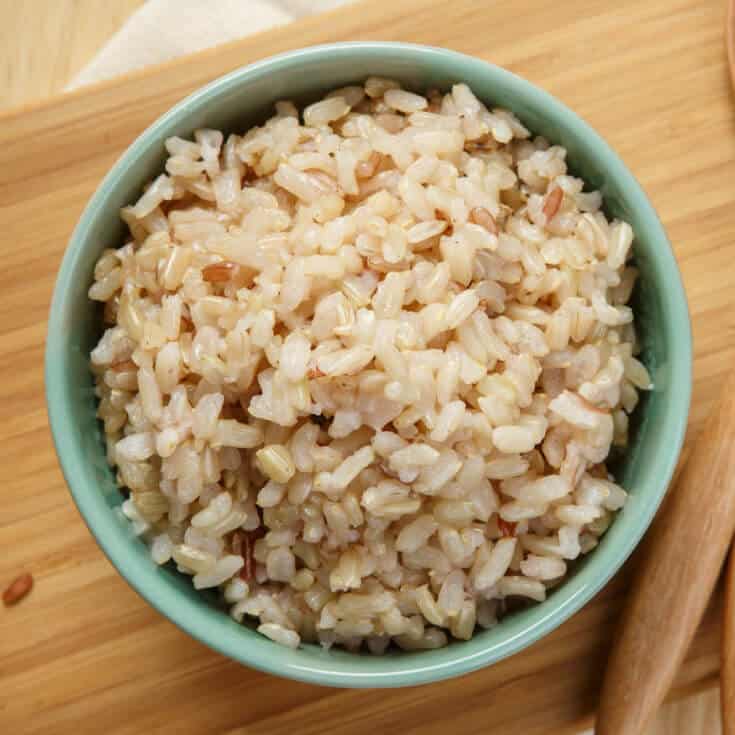This Dr. Axe content is medically reviewed or fact checked to ensure factually accurate information.
With strict editorial sourcing guidelines, we only link to academic research institutions, reputable media sites and, when research is available, medically peer-reviewed studies. Note that the numbers in parentheses (1, 2, etc.) are clickable links to these studies.
The information in our articles is NOT intended to replace a one-on-one relationship with a qualified health care professional and is not intended as medical advice.
This article is based on scientific evidence, written by experts and fact checked by our trained editorial staff. Note that the numbers in parentheses (1, 2, etc.) are clickable links to medically peer-reviewed studies.
Our team includes licensed nutritionists and dietitians, certified health education specialists, as well as certified strength and conditioning specialists, personal trainers and corrective exercise specialists. Our team aims to be not only thorough with its research, but also objective and unbiased.
The information in our articles is NOT intended to replace a one-on-one relationship with a qualified health care professional and is not intended as medical advice.
White Rice Nutrition: Is It Healthy or Bad for You?
January 23, 2024

White rice is often criticized as a nutritionally void source of empty carbs and calories. However, white rice nutrition is considered a staple ingredient in cultures and cuisines all around the world.
There are both benefits and downsides to consider when it comes to this common type of rice. In addition to being highly processed and refined, it may contain high amounts of arsenic and could be linked to an increased risk of chronic disease.
On the other hand, it is easy to digest, gluten-free and often enriched with important nutrients.
So is white rice healthy? Here’s what you need to know about white rice nutrition and whether or not it deserves a spot in your weekly meal rotation.
White Rice Nutrition Facts
White rice is a type of refined grain that has been milled and processed to remove the bran and germ of the grain, which helps cut costs for manufacturers and extends the shelf life of products.
However, many nutrients are lost during the milling process, and the rice is typically stripped of its fiber, manganese, magnesium, selenium and phosphorus.
Some types of white rice are also enriched, meaning that certain vitamins and minerals are added to the rice during processing to boost its nutritional value. In particular, manufacturers most often enrich rice with iron and B vitamins like thiamine and folate.
White rice nutrition contains micronutrients such as manganese, folate, thiamine and selenium. There are also a relatively high amount of refined carbs in white rice nutrition, along with a small amount of protein, fat and fiber.
One cup (about 158 grams) of cooked white rice nutrition contains the following nutrients:
- Calories: 205
- Total Carbohydrates: 44.6 g
- Fiber: 0.6 g
- Sugar: 0.1 g
- Total Fat: 0.4 g
- Saturated Fat: 0.1 g
- Polyunsaturated Fat: 0.1 g
- Monounsaturated Fat: 0.1 g
- Trans Fat: 0 g
- Protein: 4.3 g
- Sodium: 1.6 mg (0.1% DV*)
- Manganese: 0.7 mg (30% DV)
- Thiamine: 0.3 mg (25% DV)
- Folate: 91.6 mcg (23% DV)
- Selenium: 11.8 mcg (21% DV)
- Niacin: 2.3 mg (14% DV)
- Pantothenic Acid: 0.6 mg (12% DV)
- Iron: 1.9 mg (11% DV)
- Copper: 0.1 mg (11% DV)
- Zinc: 0.8 mg (7% DV)
- Phosphorus: 67.9 mg (5% DV)
- Magnesium: 19 mg (5% DV)
*Daily Value: Percentages are based on a diet of 2,000 calories a day.
White rice nutrition also contains small amounts of calcium and potassium.
White Rice vs. Brown Rice
There are several distinctions between brown rice vs. white rice, starting with the way that each is processed and produced. While brown rice contains all three parts of the seed, white rice is milled to remove the bran and germ, leaving only the endosperm.
This results in several key differences in the white rice vs. brown rice nutrition profile. In addition to being much higher in fiber, the brown rice nutrition facts also boast a wider array of micronutrients, including manganese, magnesium and selenium.
White rice, on the other hand, is often enriched with vitamins and minerals, meaning they are added back to the grain during processing. For this reason, enriched white rice is generally higher in iron, folate and thiamine.
There are several other minor nutritional differences between white and brown rice. For example, there are a slightly lower number of white rice calories in each serving compared to brown rice, plus a lower amount of protein, fat and carbohydrates.
Additionally, unlike the white variety, brown rice is technically considered a whole grain. Whole grains have been linked to a long list of health benefits, with research suggesting that they could provide protection against chronic conditions, such as heart disease, cancer and diabetes.
Potential Health Benefits
While there are definitely some downsides associated with eating white rice every day, there are several potential benefits to consider as well. Here are a few of the top health benefits of white rice nutrition.
1. Enriched with Vitamins and Minerals
One of the biggest white rice benefits is that it is often enriched with key vitamins and minerals that many may lack.
Iron, for instance, is an important mineral that is involved in red blood cell production. An iron deficiency can cause serious side effects, like low energy levels, dizziness and heart palpitations.
B vitamins like thiamine and folate are also commonly added to white rice, both of which are necessary for energy production, brain function and DNA synthesis. They are also essential for ensuring proper growth and development during pregnancy and can help prevent certain birth defects.
Folate, for example, can aid in the prevention of neural tube defects during early pregnancy.
2. Suitable for a Gluten-Free Diet
Many people often wonder: Is white rice gluten-free? Like brown rice, it can be safely enjoyed as part of a healthy gluten-free diet.
However, if you have celiac disease or a sensitivity to gluten, it’s still a good idea to check the label carefully and select products that are certified gluten-free whenever possible. Certain rice mixes, for example, are often combined with other ingredients that could contain gluten.
Other rice products may be processed in facilities that also process gluten-containing foods, which can increase the risk of cross-contamination.
3. Easy to Digest
Because white rice is low in fiber, it is easy to digest and often recommended for those with digestive issues. In fact, following a low-fiber diet can limit the amount of food waste moving through the large intestine, which may be beneficial for those with conditions like irritable bowel syndrome, diverticulitis or Crohn’s disease.
White rice is also a key component on the BRAT diet, a type of bland diet that is sometimes recommended following certain stomach ailments. Although research on the effectiveness of the BRAT diet has turned up mixed results, it may be a good option to ease symptoms in the short term.
4. May Aid Heart Health
There have been reports over the years that perhaps consuming white rice could have negative effects on cardiovascular health, but time and time again, research shows this is not the case. In fact, numerous studies from around the world have found that there is no association between increased white rice intake and higher risk for cardiovascular issues.
One study even concluded: “Greater habitual consumption of white rice or brown rice is not associated with CVD risk. These findings suggest that rice consumption may not pose a significant CVD risk among the U.S. population when consumed at current amounts.”
In addition, the folate content white rice nutrition can actually boost heart health and help decrease risk factors for cardiovascular disease.
5. Provides Energy
As a high-carb food, white rice can help boost energy levels. We know carbohydrates are good sources of fuel and can help improve athletic performance, but it’s important to consume high-quality carbs in moderation to prevent overconsumption and maximize physical performance.
Downsides (Risks and Side Effects)
So is white rice bad for you? There are several risks and side effects associated with this popular ingredient, starting with the amount of white rice carbs packed into every serving.
It is also low in fiber and has a high glycemic index, meaning it can increase blood sugar levels very rapidly.
Not only can regular consumption of refined grains impair blood sugar control, but a large study published in BMJ also found that white rice consumption was tied to a higher risk of developing type 2 diabetes.
Other research suggests that white rice potentially could be associated with an increased risk of metabolic syndrome, which is a cluster of conditions that occur together that can increase the risk of heart disease, stroke and diabetes.
Furthermore, although there are relatively few calories in white rice nutrition compared to other grains, studies on the link between white rice and weight loss have turned up mixed results. Although dietary patterns that include rice have been shown to prevent weight gain, other studies have found that diets high in refined grains could be tied to increased body weight and belly fat.
Arsenic is another major concern with rice consumption, as rice plants tend to accumulate higher amounts of arsenic when exposed to water or soil that is contaminated. In addition to being highly toxic, arsenic exposure can also contribute to heart problems, diabetes, neurological conditions and certain types of cancer.
Although white rice is lower in arsenic than brown rice, it’s still best to keep your intake in moderation and include a variety of whole grains in your diet to limit your exposure and decrease the risk of arsenic poisoning.
How to Cook White Rice (Recipes)
There are plenty of options for how to cook white rice, but the easiest method involves combining two parts water with one part rice in a pot, bringing it to a boil on the stove and turning it down to a simmer until all of the liquid is absorbed.
There are also tons of options for how to make white rice healthier and enjoy it as part of a nutritious diet. Besides swapping it out for wild rice, brown rice or black rice, you can also pair your grains with other nutrient-dense foods like proteins or veggies to instantly amp up the health benefits of your meal.
Here are a few simple white rice recipe ideas to help you get started:
You can make rice water for hair and skin health benefits or try rice cakes made from white or brown rice.
Conclusion
- White rice is a type of refined grain that has undergone processing to remove the bran and germ.
- This significantly decreases the white rice nutrition facts, leading to a final product that is lower in fiber and certain micronutrients.
- However, many types are also enriched, which can significantly enhance the white rice nutrition profile and provide a good amount of iron, thiamine and folate.
- Is it good for you? Besides offering several important nutrients, it is also easy to digest and gluten-free.
- However, it also has a high glycemic index, could contribute to metabolic syndrome and may contain arsenic.
- There are also several differences between brown rice vs. white rice nutrition. In addition to providing a lower amount of white rice calories, protein and fat per serving, white rice is also lower in fiber and several other key vitamins and minerals.
- While white rice is OK to enjoy in moderation from time to time, it’s best to swap in whole grains whenever possible, including brown rice, oats, quinoa, buckwheat or barley.














